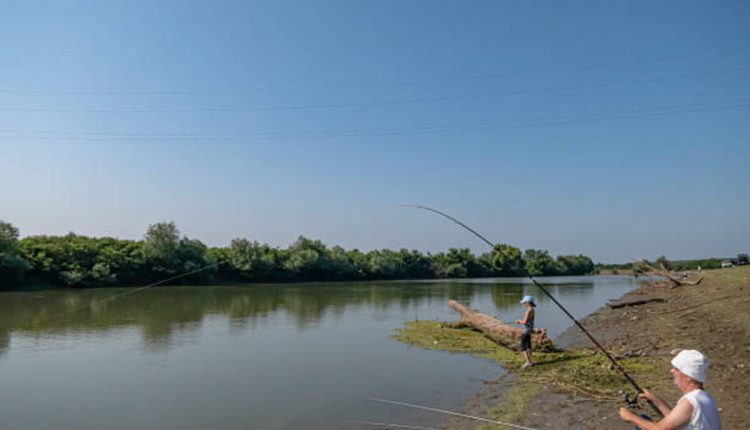Fishing at Alsea River Level
Tide times for Drift Creek, Alsea River for Monday, 15 January 2024.
We investigated the concentration and composition of particulate organic matter (POM) in suspended sediments from small mountainous rivers (SMRS) at low and high discharges. POM from SMRS displays contrasting 14C ages and elemental and biomarker compositions at different flow conditions.
Optimal Fishing Levels
The Alsea River flows through the coastal mountains of Benton and Lincoln counties in southwestern Oregon, entering Alsea Bay near the community of Waldport. The river rises at the confluence of the North Fork and South Fork Alsea rivers, passes Blackberry Campground and Grass Creek on the right and Schoolhouse Creek on the left before entering Hellion Rapids and then dropping down to a USGS gauging station near the community of Tidewater and the mouth of Alsea Bay.
The main fish species found in the Alsea River are Coho Salmon and Winter Steelhead. Both of these species have a limited window of opportunity and are best caught in the fall when they return to spawn. These fish are aggressive and acrobatic fighters when hooked, making them popular targets for anglers. A knowledgeable guide who knows the bedrock ledges of the Alsea River and can pilot a drift boat through the swift water will ensure that you have an exciting day of fishing on this river.
While the Alsea River does have a few resident trout, it is best known for its salmon runs. The river is a tailwater, meaning that it drops rapidly after rain storms. This is why it can be difficult to find the optimal river level when fishing for salmon. For the most consistent results, you should feel at a level that is around the middle of its range.
Flood Insurance Study
The National Flood Insurance Program (NFIP) conducts a study of a community’s flood risk to identify its Special Flood Hazard Areas. These areas are mapped by FEMA and are used to determine whether structures must be protected with flood insurance and the rate of premiums.
The Alsea River drains 470 square miles of coastal mountains, including Mary’s Peak in southern Benton County and the Five Rivers system in northwestern Lane County. It flows west-northwest on a winding course to the Pacific Ocean near Waldport in Oregon’s midcoast. The Alsea River watershed includes the North and South forks of the river, numerous tributaries, and drainage basins.
According to a recent study by Wharton School researchers, the NFIP’s flood insurance rates do not reflect accurate private insurers’ costs. The NFIP’s rates are above the “pure” private premium—the amount a private insurer would charge to cover all losses perfectly—because of what economists call “loading.” This practice increases the risk that the NFIP will have to pay out claims beyond its reserves.
Lowering flood risk starts with higher standards. Many communities plan to adopt a “500-year standard,” which reduces the number of properties at severe risk and will help keep rebuilding costs down. The NFIP is also implementing risk rating reform, which will consider a property’s elevation level, distance from a flooding source, the cost of re-building, and different types of flooding like storm surge and river overflow, giving homeowners a more individualized assessment.
Flood Controls
Unlike grey infrastructure (concrete and steel structures that control flooding), green infrastructure gathers water where it falls. It’s more affordable and sustainable – plus it reduces stress on natural systems. Learn how you can use green infrastructure in Alsea to minimize flood risk here.
The Alsea Bay entrance bar can be dangerous to boats during high tides. If an underpowered or engine failure ship crashes into the bar, it can be pulled into the surf, jeopardizing the lives of those aboard. The bar at the entrance to Oregon’s seventh-largest bay is a hazard for all boaters and requires care and caution when entering it.
As an unincorporated town, Alsea does not have its own public works department and is dependent on Benton County for services such as water line maintenance. GIS data is also lacking throughout the town. Stub-out locations of potable water meters appear on the map, but no data exists to verify that these stub-outs are providing potable water to homes.
Wildfire risk in Alsea is determined by the topography, weather, and the presence of manmade materials that trap heat and radiate it. Topography also determines how far and fast a fire can spread. The map below shows the probability of a fire impacting any given property in Alsea River Front over the next 30 years.
Fishing During High River Levels
High river levels make fishing a little more challenging, but experienced anglers are well-equipped to tackle them. First, avoid the apparent fast water. Instead, look for calm areas where fish are still finding food and shelter. Often, these are new current seams, slack waters, and eddies. Eddies are areas where an obstruction, like a log, boulder, or tree, juts into the current and creates a back current that entraps food and baitfish. Any of these eddies will likely contain trout and can be productive spots to fish during high-flow periods.
Fish tend to concentrate in these areas when the river is roaring since they are able to avoid the faster current. The best anglers are able to locate the slow side of these seams, eddies, and slack waters by watching the movement of foam or debris on the surface of the water. Then, they spend the majority of their time working these zones rather than trying to fish the outsides of bends or riffles that are usually too fast for trout to hold comfortably.
It is essential to keep in mind that a river’s optimum water level will change each year. Keeping track of these levels will help you to locate fish in any season and condition.

